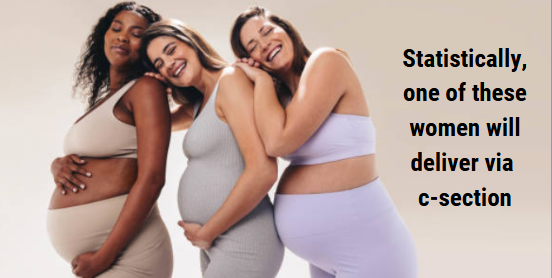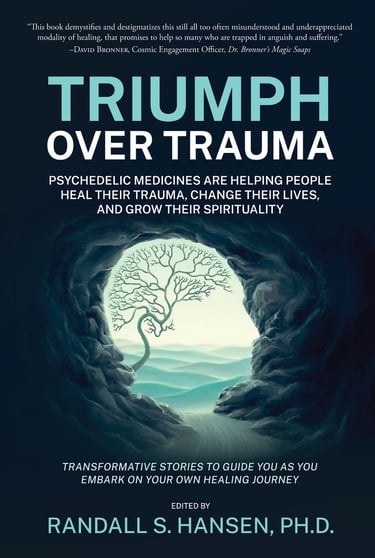Health Consequences of C-Sections


Why are some pregnant women electing to have an invasive operation to deliver their babies when there is no medical cause for doing so? Especially when we know vaginal births are extremely beneficial for the infants? Is this trend simply a further move down the convenience lifestyle?
As of the latest data, about one-third (32 percent) of all births are now delivered through a surgical procedure rather than vaginal birth. That is a big increase from one-fifth (20 percent) of all births in the late 1990s… and an enormous rise from only 1 in 20 (5 percent) births in the 1970s, which is about the time that c-sections started being used as a preemptive solution to improve the potential outcomes for mother and baby.
There is no question that c-sections, formally known as cesarean sections, can be life-saving for mother and child. But more and more, these surgical procedures that allow a woman to give birth through an incision to her abdomen and uterus are being performed not as a life-saving measure, but scheduled for the convenience of the mother and/or doctor.
However, it is also clear that vaginal births are highly beneficial for the babies due to the exposure to helpful microbes passed from mother to baby during delivery.
Keep reading for an examination of the pros and cons of c-sections, as well as the reduction in healthy outcomes from babies born via c-sections.
Pros and Cons of C-Sections
Pros
Life-saving. No question, this operation has saved countless lives of both mother and baby, especially when there is a medical reason for the surgery.
Controlled Timing: When opting for an elective c-section, parents and families can plan for the birth.
Eliminates Painful Labor: Especially for first-time mothers, a vaginal delivery can be a long and grueling process lasting for many hours.
No Vaginal Injury: Because a c-section is an operation that removes the baby, there is no impact on the vagina, thus no stretching or tears.
Cons
More Painful Recovery: The c-section is a major operation that cuts through muscle to get to the uterus, which means a longer and often painful recovery.
Longer Time Spent in the Hospital: Many women who give birth vaginally are discharged quickly from the hospital, but with a c-section, most women stay in the hospital for 2-4 nights.
Risk of Infection. The c-section is a major operation, and any surgery poses the risk of infection, severe bleeding, and scarring of the wound or the womb.
Risk of Death: Women are three times more likely to die during a c-section delivery than during a vaginal birth (often resulting from blood clots, infections, or unforeseen complications).
Delayed Onset of Breast Milk: It sometimes takes several days to activate breastfeeding after a c-section.
Delayed Bonding: After a vaginal birth, the baby is placed with mom as quickly as possible to begin forming that essential bond; with a c-section, that bonding is delayed because of the operation.
Increased Health Risks for Babies: Babies born via c-section not only have increased risk for respiratory issues (into childhood), but they also miss out on the beneficial microbes delivered via vaginal birth, which negatively affects their immune systems.
Detrimental Health Outcomes for C-Section Babies
It is amazing how important both the mother’s microbes and antibodies are to building a strong foundation for a healthy baby.
To clarify further: Everyone has multiple microbiomes on and inside their bodies, including on the skin, in the mouth, and the gut. Women also have a vaginal microbiome. Each of these “communities” consists of millions and millions of mostly beneficial bacteria (as well as viruses and yeasts).
These microbial communities are essential to our health and well-being, playing a major role in metabolic function, mental health, digestion, and immune functions.
(Learn more about our microbes here.)
According to numerous research studies, here are the possible long-term negative health consequences to the child when choosing to deliver via c-section:
Underdeveloped immune system;
Triple the risk of ADHD;
Twice the risk of autism;
An 80 percent increase in risk of celiac disease;
A 50 percent increased risk of becoming obese as an adult;
A 70 percent increased risk of Type 1 diabetes;
Increased risk of developing juvenile arthritis;
Increased risk of developing inflammatory bowel disease;
A fivefold increased risk of atopy (allergy-related conditions, including asthma, eczema, and hay fever).
Final Thoughts About C-Sections
Even obstetrician medical organizations are getting involved in examining why there has been such an uptick in c-sections versus vaginal births, especially given the importance of the transfer of microbes via a vaginal birth and the negative long-term health consequences for children born via c-section.
As a man, I can only report the trends and what the research shows. Obviously, every woman must make her own choice; the goal of this article is simply to provide more information that is often not part of informed consent – or part of any discussion about vaginal birth versus c-section birth.
It’s clear from the research that vaginal birth offers many benefits and should be the primary delivery method for childbirth. Children delivered via c-section have a significantly increased risk of asthma, ADHD, autism, systemic connective tissue disorders, juvenile arthritis, inflammatory bowel disease, immune deficiencies, leukemia, and obesity.
So… should those operations when there is no risk to mother or baby be renamed convenience-sections, because that is what they truly are, while also not being beneficial to the baby. Interestingly, both the American College of Obstetricians and Gynecologists (ACOG) and the National Institute of Health (NIH) have stated that it is ethically permissible for physicians to perform C-sections purely on the mother’s request.
Additional Caesarean C-Section Resources
Sky-High C-Section Rates in the US Don’t Translate to Better Birth Outcomes
Side Effects And Risks Of C-Sections: 10 Things No One Tells
A Pediatrician’s Perspective on C-Section Births and the Gut Microbiome
Short-Term and Long-Term Effects of Caesarean Section on the Health of Women and Children
Caesarean Section and Respiratory System Disorders in Newborns
What the Data from 1 Million Births Says About Your Likelihood of Having a C-Section
Dr. Randall Hansen is an evangelist, educator, and thought-leader... helping the world heal from past trauma and the poor food system. He is founder and CEO of EmpoweringSites.com, a network of empowering and transformative Websites, including EmpoweringAdvice.com.
He is the author of the groundbreaking Triumph Over Trauma: Psychedelic Medicines are Helping People Heal Their Trauma, Change Their Lives, and Grow Their Spirituality and the well-received HEAL! Wholeistic Practices to Help Clear Your Trauma, Heal Yourself, and Live Your Best Life.
The third book in the Wholeistic Healing Trilogy is the game-changing The HEALing Revolution Diet: A Science-based Approach to Heal Your Gut, Reverse Chronic Illnesses, Lose Weight, Clear Your Mind, and Increase Longevity.
Dr. Hansen's focus and advocacy center around true health and healing journeys that results in being able to live an authentic life filled with peace, joy, love. Learn more by visiting his personal Website, RandallSHansen.com. You can also check out Dr. Randall Hansen on LinkedIn.






